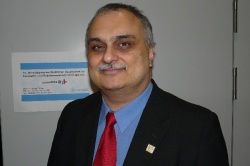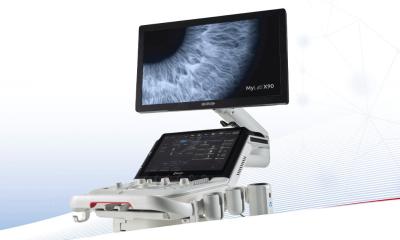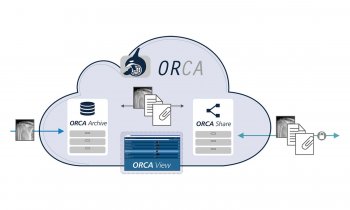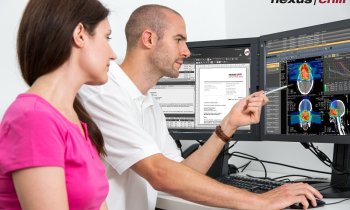Image guidance and robotics in the OR improve precision in the OR
Key trends in computer-assisted surgery and robotics dominated the agenda of the annual congress of the German Association for Computer- and Robotics-Assisted Surgery (CURAC), reports Michael Reiter.


The conference, scheduled in conjunction with Medica in Düsseldorf/Germany, focused on abdominal surgery and on the disciplines which had ranked less prominently at preceeding events. “The principal background of our society is in neurological, ENT, and maxillofacial surgery”, explained Prof. Dr. Arya Nabavi, President of CURAC 2012. The aim of the technologies is to make available to the surgeon all the information which he requires to assess a condition and apply the appropriate therapy with a minimized risk for complications. Reduced length of stay and accelerated reconvalescence are the result.
The conference programme included presentations based on peer review, intensive skill-building courses addressing, in particular, young professionals from medical engineering and medical informatics, and sessions dedicated to the future of surgery in the next ten to fifteen years. Prof. Nabavi: “In those ‘future surgery’ sessions, we looked at potential key developments and at the potential strategic focuses of our society. It is our aim to ensure that emerging technologies are applied appropriately. ”
New key application areas are emerging
“Since their inception about twenty years ago, computer-assisted methods and image-guided surgery have established themselves in the mainstream of surgical routine”, underlined the expert. “Robotics-assisted abdominal surgery and procedures supported by endoscopy are currently the areas which sport strongest growth.”
Equipment is miniaturized
Advanced robotics equipment and mounts have continuously been reduced in size during recent years. This enables the surgeon to regain access to the patient which had not been possible with the initial large machines. “Besides miniaturization, current trends include the optimization of imaging technologies and the improvement of intra-operative visualization by better endoscopes, microscopes, or through the application of imaging techniques such as MRI, CFT, or ultrasound, also in combination”, said Prof. Nabavi. The goal of the society is to bring these individual methods together and orchestrate this set of advanced tools in multi-modal ORs.
Ongoing developments include the optimization of segmenting technology to better identify tumour tissue: verifying whether tissue is affected during a procedure will help reduce the need for intra-operative histology. – On the vendor side, standardization and modular approaches are driven by a multitude of smaller companies with modular solutions as a basis to build ORs from.
Luminaries in the field
There are several university hospitals in Europe which work with a highly innovative toolset. Kiel in the North of Germany is a perfect example, said Prof. Nabavi. And at this year’s CURAC, a newly founded research collaboration was presented: specialists in abdominal surgery at the Heidelberg University Hospital work with robotics experts from the University of Karlsruhe have won a major grant from the German Federal Ministry of Education and Research (BMBF). This collaboration between clinicians, engineers, and informatics experts will enable significant advances in the field.
The luminary which stands out at an international level, according to the congress president, is the Brigham and Women’s Hospital in Boston. Under the leadership of Prof. Ferenc Jolesz, an integrated multifunctional OR has emerged there which combines a high-field magnet for anatomic, and a PET/CT for metabolic imaging. Pocedures carried out in this OR were presented by Prof. Ron Kinis at CURAC; they focus on urology, gyn, abdominal, as well as neurological surgery.
About CURAC
The German Association for computer- and robot-assisted surgery (Deutsche Gesellschaft für Computer-und Roboterassistierte Chirurgie e.V.) has established itself during the past decade as the leading German society in the field with members who are leaders in medicine, engineering and informatics. Membership includes key actors from Austria and Switzerland. Today, the society aims at creating synergies by transferring the know-how gained in to the other disciplines. The next annual conference is scheduled in Innsbruck/Austria; papers and presentations are welcome also in English, and there will again be a kaleidoscope of developments at an international level.
22.11.2012











